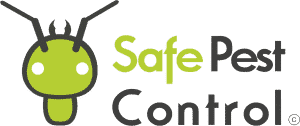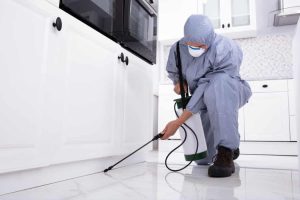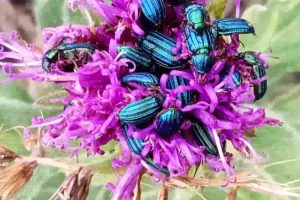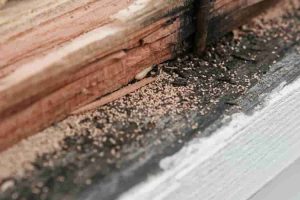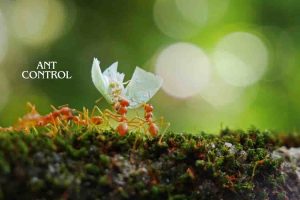Ensuring a pest-free environment in multi-family housing units is crucial for the well-being of residents and the integrity of the property. Pests can spread quickly in such environments, causing health hazards and property damage. Implementing regular inspections and maintenance routines is key to effectively managing pest issues.
Effective pest control requires collaboration between property managers and residents. We need to educate everyone about the importance of cleanliness and proper waste disposal. By creating a community that values hygiene and prompt reporting of any pest sightings, we can significantly reduce infestations.
Professional pest control services play a vital role. They offer expertise and advanced treatments that we may not be able to execute ourselves. With regular professional inspections and preventative measures in place, we can ensure a safer living environment for all residents.
Understanding Pest Behavior in Multi-Family Environments
Effective pest management in multi-family housing units requires us to understand the habits and preferences of various pests. This helps us target our control efforts more precisely, ensuring a healthier living environment for everyone.
Common Pests and Their Habitats
In multi-family housing, common pests include cockroaches, bed bugs, and rodents like mice and rats. Cockroaches often nest in dark, moist areas such as kitchens and bathrooms. The German cockroach, for instance, thrives in cracks and crevices near food and water sources.
Bed bugs, on the other hand, prefer warm, human-inhabited spaces. They are frequently found in mattresses, bed frames, and furniture. Rodents like mice and rats seek sheltered, food-rich environments. They commonly infest basements, attics, and walls, exploiting any structural weaknesses to gain entry.
The Role of Environmental Factors
Various environmental factors contribute significantly to pest infestations. Moisture issues, for example, attract pests such as cockroaches and various insects. Leaky pipes and damp areas create ideal breeding grounds.
Food availability also plays a crucial role. Spilled food and unattended trash can lure pests into populated areas. Meanwhile, structural conditions like gaps and crevices provide easy entry points for pests. Sealing these entry points and maintaining hygiene can help reduce pest problems.
By being aware of these behaviors and environmental conditions, we can implement more effective pest control strategies in multi-family housing. Understanding and addressing these factors allows us to maintain a cleaner and safer living environment for all residents.
Fundamentals of Integrated Pest Management (IPM)
Integrated Pest Management (IPM) is a holistic approach that balances multiple pest control strategies for effective and sustainable outcomes. By combining various methods, we can manage pest populations while minimizing environmental and health risks.
IPM Principles and Strategies
IPM is built on several key principles. First, it’s important to understand the pest ecosystem, including identification and biology. This knowledge allows us to develop tailored strategies.
Next, an IPM approach integrates several control methods. These include biological controls, cultural practices, physical controls, and chemical controls. Each method plays a role in minimizing pest impact.
Another important strategy is prevention. Sanitation and exclusion techniques reduce the chances of infestations. For example, sealing entry points and maintaining cleanliness can deter pests.
Monitoring and Early Detection Techniques
Monitoring and early detection are crucial components of IPM. Regular inspections help in identifying pest problems before they become severe.
We utilize various tools for this task. Sticky traps, pheromone traps, and visual inspections are effective for monitoring pest activity. These tools help us keep track of pest populations and their locations.
Early detection allows for timely control efforts. When we catch infestations early, we can use less aggressive methods, such as bait stations or targeted treatments, reducing the need for widespread pesticide use.
Chemical and Non-Chemical Control Measures
IPM combines chemical and non-chemical approaches to control pests effectively. Non-chemical measures include biological controls like introducing natural predators and cultural practices such as crop rotation.
Chemical methods are used judiciously. When insecticides are necessary, we opt for targeted treatments that reduce exposure. Bait stations and insecticide treatments can be strategically placed to control specified pest areas with minimal risk.
We prioritize using the least toxic options first. This minimizes harm to humans, animals, and the environment while maintaining effective pest control.
Operational Practices for Effective Pest Control
Effective pest control in multi-family housing units involves thorough inspection and identification, as well as collaboration and communication with staff and tenants. These practices help identify root causes and address issues promptly.
Inspection and Identification Procedures
Regular inspections are essential for effective pest control. We begin by conducting thorough assessments to identify potential problem areas. Entry points, such as cracks and gaps, must be sealed to prevent pests from entering.
Our inspection procedures include regular monitoring to detect early signs of infestation. We focus on common areas like basements, kitchens, and bathrooms, using tools like vacuuming to remove pests and debris.
Proper reporting methods are established to document findings and actions taken. We ensure EPA-approved products are used responsibly during treatment to minimize environmental impact.
Ongoing education for our staff is crucial. We train them to recognize signs of different pests and understand the best methods for control and prevention. This training ensures that our inspections are thorough and effective.
Collaboration and Communication Strategies
Collaboration with tenants and staff is key to maintaining a pest-free environment. We encourage tenants to report any pest sightings promptly. By creating a clear reporting system, we can respond quickly to tenant complaints and satisfaction.
Regular education sessions are conducted to inform tenants about prevention measures and their role in pest control, such as maintaining cleanliness and sealing food properly. We provide guidelines on how to manage waste and prevent attracting pests.
Communication strategies involve regular meetings with staff to ensure everyone is informed about ongoing pest control activities and results. This helps in coordinating efforts and maintaining consistency in pest control practices across all units.
By combining inspections with strong collaboration and communication, we create a proactive approach to pest control that addresses both immediate and long-term needs.
Engaging Residents and Staff for Long-Term Success
We believe that involving both residents and staff in pest control efforts is essential for long-term success. By providing educational programs and developing community-driven plans, we can ensure everyone is invested in maintaining a pest-free environment.
Educational Programs and Resources
Educational programs are vital for empowering residents and staff with the knowledge they need to prevent and manage pests effectively. We offer workshops and informational sessions that cover best practices for keeping pests at bay. These can include proper waste disposal methods, sealing entry points, and regular cleaning routines.
Additionally, we provide resources such as pamphlets, posters, and online materials. These resources are available in multiple languages to cater to the diverse residents in multi-family housing units. Regular updates and reminders about pest control measures help reinforce the importance of collective action.
Examples of educational initiatives include:
- Workshops on pest identification and prevention.
- Informational flyers distributed to all residents.
- Online webinars for convenient access.
- Multilingual resources to ensure widespread understanding.
Developing a Community-Driven Pest Control Plan
Creating a community-driven pest control plan fosters a sense of ownership and responsibility among residents and staff. We involve property managers, tenants, and maintenance teams in developing and implementing these plans. Regular meetings and discussions allow everyone to voice concerns and suggestions.
Our pest control plan includes scheduled inspections and treatments in common areas and shared spaces. Communication is key, so we use newsletters, bulletin boards, and digital alerts to keep everyone informed about upcoming pest control activities. Staff training is also essential to ensure consistency in pest management practices.
Key components of a community-driven plan:
- Regular inspections of common areas.
- Clear communication channels for updates and alerts.
- Inclusive meetings to gather feedback from all residents and staff.
- Staff training to maintain high standards in pest control.
By focusing on education and community involvement, we can successfully manage pests in multi-family housing complexes, ensuring a healthy and pleasant living environment for all.
On-Time Service

5 STAR SERVICE BASED ON 100+ GOOGLE REVIEWS
PET & FAMILY FRIENDLY TREATMENT

ALL YEAR-ROUND PROTECTION
Take Back Control Now
8
REASON TO CHOOSE SAFE PEST CONTROL
- Guarantee protection all year-round
- 30 Years Collective Experience
- An impeccable reputation across Sydney's Suburbs
- Certified treatments & written Warranty On all work carried out
- Family Owned & Operated
- Rated #1 Pest Control In Sydney NSW
- No Mess, No Smell
- Family & Pet Friendly Treatments
REQUEST A QUOTE
Unveiling the Hidden Costs.
Welcome to our deep dive into “Hidden Cost of Rodents in Sydney’s Hospitality Industry.” Sydney, a bustling hub known for its vibrant food, night out scene and stunning harbourside views, faces a less glamorous challenge impacting its restaurants and cafes—rodent infestations. This post explores the extensive, often overlooked consequences these furry intruders have on businesses spread across the city.
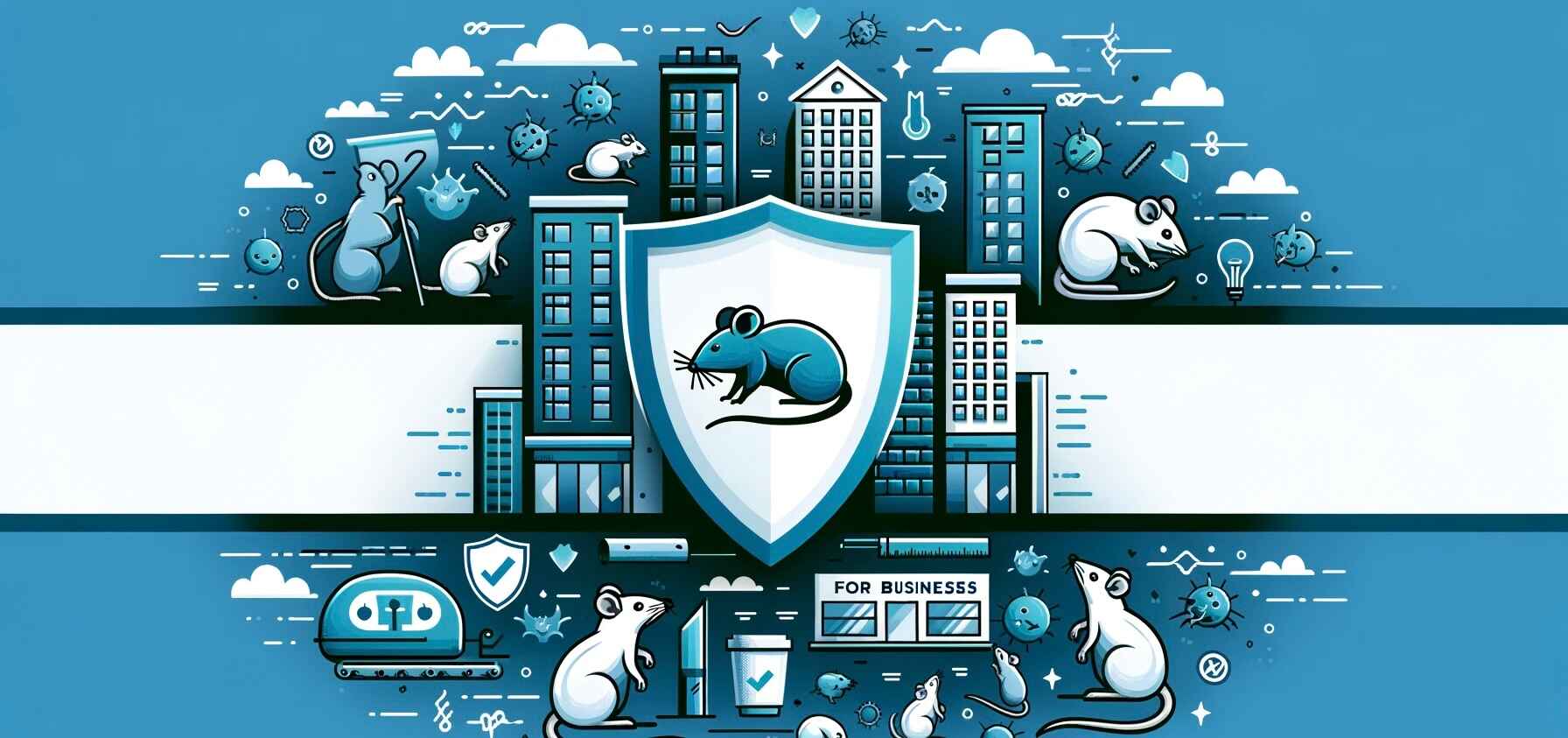
The Economic and Health Impact of Rodents
Financial Drain from Rat Infestations
Rodent control is a significant concern for Sydney’s restaurant owners. The presence of rats and mice not only necessitates frequent and costly pest control interventions but also leads to substantial economic losses. From hiring services like Safe Pest Control Sydney to repairing damages and replacing contaminated food, the financial burden can quickly add up. Rat infestations disrupt daily operations and can even cause temporary closures, further straining a business’s finances.
Health Risks and Safety Concerns
The health implications of rodent presence in food establishments are severe. Rats & mice carry diseases and bacteria and their urine can contaminate food surfaces and supplies, posing a direct risk to the health of both customers and staff. This risk extends beyond immediate contamination; diseases such as leptospirosis bacteria and even the bubonic plague are linked to rats and mice, making effective rat control not just a financial decision, but a critical health imperative.
Rat Population Dynamics in the Inner West Sydney
Rapid Reproduction and Persistent Challenges
Sydney’s inner city and suburbs. Sydney’s CBD and suburbs, in particular, provide an ideal breeding ground for rodents. With abundant food scraps from restaurants and food trucks, as well as improperly secured food containers, the rat population thrives. The rapid reproduction rates of rats mean that without consistent and effective control measures, even a small infestation of rats can quickly escalate into a more severe problem.
The Challenge of Maintaining Hygiene in Public Areas
Keeping Sydney’s bustling public areas, like Central Station and other sites around the city, free of rodents is a constant challenge. The city’s streets and waste and garbage disposal areas attract many species of rodents, complicating efforts to maintain hygiene and safety in places frequented by tourists and locals alike during winter. Restaurants, particularly those with outdoor seating, find themselves at the frontline of this battle, needing to secure their properties against rodents continually.
This overview sets the stage for understanding the broader implications of rodent infestations in Sydney’s hospitality industry. In the next sections, we will delve deeper into the methods and strategies for managing these pests and highlight real-life impacts and stories from local businesses. Stay tuned to uncover more related stories about how this issue affects not just individual restaurants but the city’s reputation as a prime culinary destination.
Strategic Approaches to Rodent Management
Proactive Pest Control Measures
Effective pest management in Sydney’s hospitality industry is crucial to prevent the financial and health repercussions of rodent infestations. Engaging professional services like Safe Pest Control Sydney can provide businesses with tailored solutions that address their specific needs. Regular inspections, the use of bait stations, and sealing entry points are essential strategies to keep rat numbers under control and ensure the safety of both food and patrons.
Innovations in Rat Control Techniques
Advancements in pest control technology have introduced more sophisticated methods to combat rat infestations. These include ultrasonic devices that deter rodents with high-frequency sounds, and integrated pest management programs that combine biological, mechanical, and chemical tools to provide sustainable solutions. Such innovations not only reduce the reliance on traditional poisons and traps but also minimize the environmental impact of pest control efforts.
Impact on Business Operations and Customer Perceptions
A rat sighting can lead to significant disruptions in a restaurant’s operations. Health inspections can result in penalties, and in severe cases, temporary closures while the situation is addressed. The process of eliminating an infestation of rats and sanitizing the restaurant or establishment is not only costly but can also lead to lost revenue from days when the restaurant or business is unable to operate normally.
Customer Trust and Business Reputation
The impact of rodents on a restaurant’s reputation can be long-lasting. In today’s digital age, news of a rat infestation or restaurant spreads quickly, potentially leading to a decline in customer visits and a tarnished restaurant’ brand image. Rebuilding customer trust requires time, transparent communication about the measures taken to resolve the rat issue, and visible improvements in hygiene practices.
Cost of rodent infestation in Sydney’s hospitality industry is a multifaceted issue affecting business finances, property, public health, and the overall dining experience. It’s imperative for restaurant owners and city officials to collaborate on comprehensive strategies that address the root causes of rodent infestations and implement effective pest control and measures.
Encouraging Collective Efforts
Businesses can benefit from forming alliances to collectively address the rodent problem in their areas. By sharing resources and knowledge, they can enhance their efforts in pest control and minimize the various species of pests’ overall impact on the industry.
Education and Awareness
Increasing awareness about pests, the importance of pest control and educating business and property owners about the best practices for preventing infestations are vital steps towards against rid of pests and maintaining a healthy environment. Regular training sessions for staff and property, on hygiene practices and waste management can also play a significant role in mitigating pest issues.
By taking proactive steps and utilizing innovative pest management strategies, Sydney’s hospitality industry can safeguard its reputation with customers, ensure the health of its patrons, and avoid the hidden costs associated with rodent infestations.
Sustaining Sydney’s Culinary Reputation Through Effective Pest Management
Emphasizing Regular Maintenance and Vigilance
To prevent rat populations from becoming a recurring issue, it’s crucial for businesses, especially in food service, to implement regular maintenance and vigilance. This includes routine checks for signs of rodent activity such as droppings, gnawed packaging on walls, and unusual smells. Establishing a regular schedule with a pest control Sydney company can ensure that potential infestations of rat urine are caught and addressed early, before they escalate into more severe problems.
Leveraging Local Council Resources and Support
The local council plays a pivotal role in controlling the rodent problem within Sydney. Businesses can benefit from leveraging council-provided resources, such as information sessions, guidelines for effective waste management, and support in dealing with infestations. Collaborating with the council to address areas of concern in public spaces can also help reduce the overall rodent population in the inner city itself.
The Broader Implications for Public Health and Urban Living
Beyond the direct impact rats and mice have on restaurants, the presence of rodents in urban settings like Sydney’s CBD poses broader public health risks. Diseases carried by rats dogs and mice can spread to humans through direct contact or indirectly via contamination of food and surfaces. Ensuring effective rodent control is not only about protecting individual businesses but also about safeguarding the health of the community.
The Urban Environment and Wildlife Management
Managing rodents in an urban environment also calls for a balanced approach to wildlife management. While it’s important to control rat infestations, it’s equally necessary to consider humane methods and the ecological impact of different types of pest control measures. Using strategies that minimize harm to animals and other wildlife and maintaining the natural urban ecosystem are important considerations.
Looking Ahead: Innovations and Future Directions in Rodent Control
New Technologies and Approaches
As technology advances, so do the methods for managing pest populations. Sydney’s businesses and pest control professionals must stay informed about new developments in the field, such as AI-driven monitoring systems that predict and track rodent movements or environmentally friendly repellents for pets that reduce the need for chemical treatments.
Community Engagement and Education
Enhancing community engagement through educational programs that inform residents and business owners about rats and how to minimize food sources and harborage for various species of rodents can lead to a city-wide reduction in rat numbers. By promoting a shared responsibility toward a cleaner and safer urban eating environment, Sydney can continue to thrive as a top global destination for dining and tourism.
A Collective Commitment to a Rodent-Free Sydney
The hidden costs of rodents in Sydney’s hospitality industry highlight the need for a sustained and collective effort to manage these pests. Through innovative, pest control and disease control strategies, community involvement, and ongoing education, Sydney can continue to protect its culinary reputation and ensure a safe dining experience for all. As the city evolves, so too should its approaches to pest control and disease management, embracing new technologies and fostering a community dedicated to maintaining high standards of health and food safety.
On-Time Service

5 STAR SERVICE BASED ON 100+ GOOGLE REVIEWS
PET & FAMILY FRIENDLY TREATMENT

ALL YEAR-ROUND PROTECTION
Take Back Control Now
8
REASON TO CHOOSE SAFE PEST CONTROL
- Guarantee protection all year-round
- 30 Years Collective Experience
- An impeccable reputation across Sydney's Suburbs
- Certified treatments & written Warranty On all work carried out
- Family Owned & Operated
- Rated #1 Pest Control In Sydney NSW
- No Mess, No Smell
- Family & Pet Friendly Treatments
REQUEST A QUOTE
